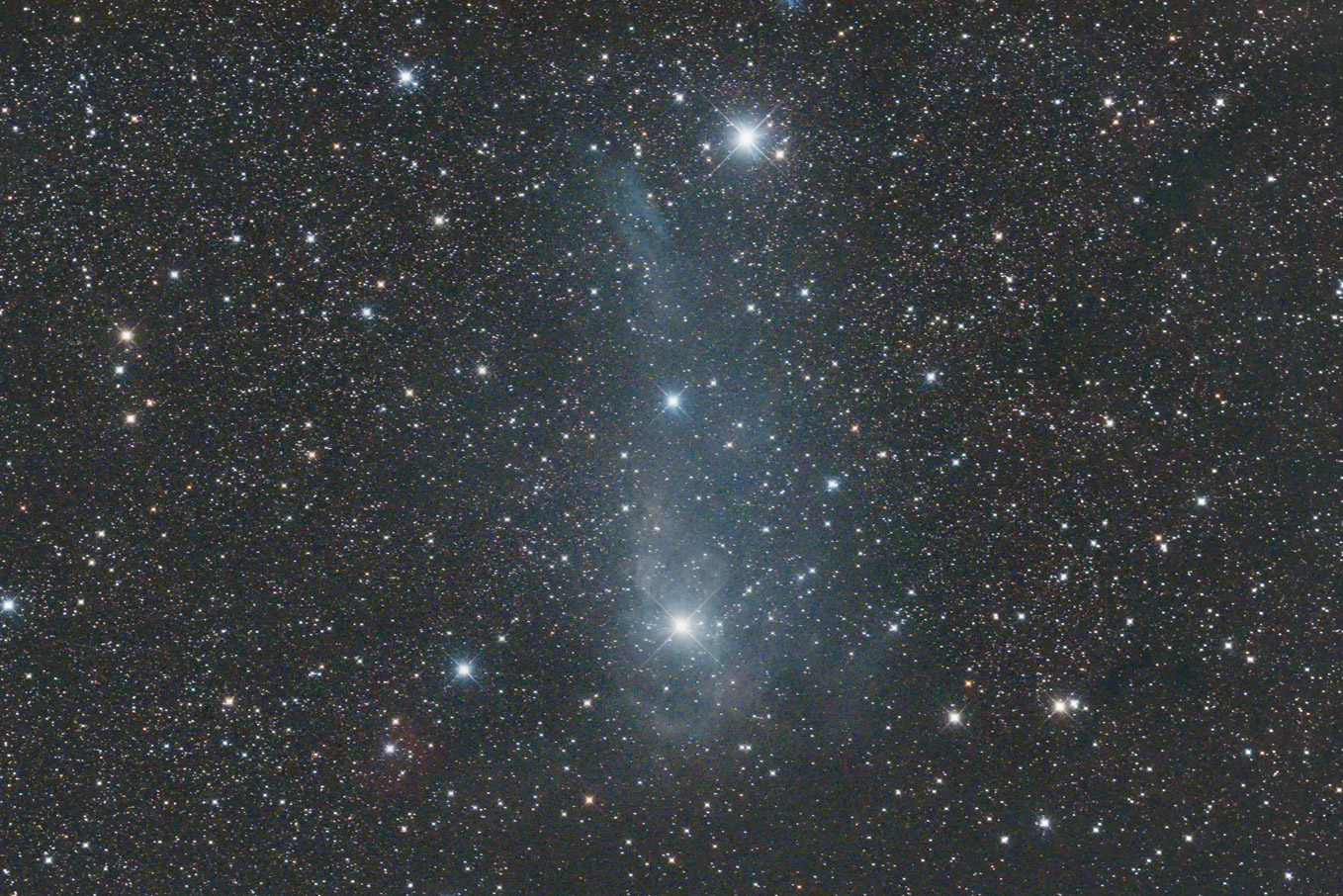| vdB14 / Reflection Nebula, type 4 R |
|---|
| R.A. | 03h 29m (2000.0) |
|---|
| Dec. | +59° 50' (2000.0) |
|---|
| Apparent Size | 20.0' |
|---|
| Real Size | N/A |
|---|
| Magnitude | - |
|---|
| Distance | N/A |
|---|
| Other IDs | LBN681 |
|---|
|
| vdB15 / Reflection Nebula, type 6 R |
|---|
| R.A. | 03h 29m (2000.0) |
|---|
| Dec. | +58° 50' (2000.0) |
|---|
| Apparent Size | 20.0' |
|---|
| Real Size | N/A |
|---|
| Magnitude | - |
|---|
| Distance | N/A |
|---|
| Other IDs | LBN684 |
|---|
|
This shot shows you very faint bluish reflection nebulae lying around the northern edge of autumn Milky Way between Cassiopeia and Perseus.
The nebulae belong to a territory of Camelopardalis, and it can be said that they are almost not named.
The northern part (upper part in this picture) reflecting a 4th magnitude star of B Cam has a minor catalogue number of vdB14,
and an another southern part (lower in picture) is vdB15 surrounding C Cam with a magnitude of 5.
Naturally enough, it's absolutely impossible to appreciate the nebulae with eyes through scopes, only detectable on long exposed films under very conditioned sky.
These two nebulae are reproduced as individual clouds in detailed star charts, but it seems that they form single huge nebulosity based on an emphasized image below.
This image has been cropped with an equivalent focal length of 700mm.
To Wide-field image around IC1805 & IC1848(913KB)
|

